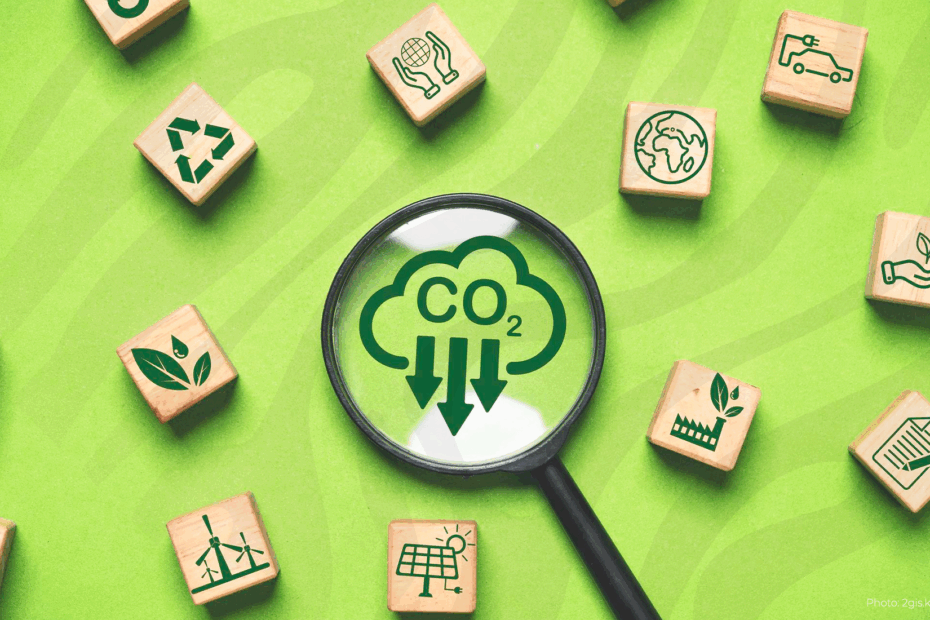Assel Aben,
Chief Expert of the Economic Policy Analysis Department of
KazISS under the President of the Republic of Kazakhstan
In the context of the global climate crisis and increasing international regulations, carbon markets are becoming a crucial tool for environmental transformation. Kazakhstan and China have developed and are implementing emissions trading systems (ETS) to achieve their climate goals and adapt to new requirements, including the EU’s carbon border tax (Carbon Border Adjustment Mechanism, CBAM). Despite the differences in scale, political and economic context, and level of technological maturity, both countries demonstrate a commitment to climate responsibility by building their carbon market architectures.
Kazakhstan is a local ETS and carbon neutrality ambitions
Kazakhstan, being one of the most carbon-intensive economies in Central Asia, has declared its commitment to achieve carbon neutrality by 2060. An important element in achieving this goal is a well-developed system for trading emissions quotas and carbon units. The first step in this direction was taken back in 2013, when its own ETS was introduced (the first in the CIS). Further, the system went through several stages: launch, suspension for reform (2016-2017), updating and implementation of standards for monitoring, reporting, and verification of MRV (2018-2021). MRV is implemented in semi-automatic or manual mode, although steps are being taken to create a digital platform.
Today, Kazakhstan’s carbon unit trading system covers more than 200 companies and about 50% of the country’s emissions. The scope includes the energy and industrial sectors, but significant sources such as agriculture or waste management remain outside the scope. The price per carbon unit remains low, at 1-2 USD per ton of CO₂, which does not create incentives for a large-scale decarbonization transition. According to experts, the desired price level per carbon unit for effective stimulation of low-carbon projects is from 20 USD/ton of CO2.
One of the priorities was the development of the Voluntary Carbon Market (VCM). In 2023, Kazakhstan announced the creation of a system of voluntary carbon units that comply with international VERRA and Gold Standard standards. This will attract private investment in projects to reduce emissions and increase export competitiveness. The Astana International Financial Center (AIFC) plays an important role in these processes, promoting initiatives in the field of sustainable finance and the development of a national registry of carbon units. AIFC is also considered as a hub for attracting foreign investors and trading quotas within the Eurasian space [1].
However, the existing ETS of Kazakhstan faces a number of challenges: a low level of trading activity, limited liquidity, weak digitalization, a lack of qualified personnel, and a variety of reporting methods.
China is the largest emitter and global strategist
China is the largest emitter of CO₂ in the world (about 30% of global emissions). In 2020, China announced a goal to achieve peak emissions by 2030 and carbon neutrality by 2060. As in Kazakhstan, the Chinese ETS was formed in stages: in 2013-2017, pilot schemes were tested in eight provinces, then a national system was launched in 2021, covering more than 2,000 enterprises from the electric power sector (about 40% of the country’s emissions). Soon, China’s ETS will be expanded to include the steel, cement, chemical, and aviation industries. Carbon footprint calculation standards are already being developed for 100 key products, with an expansion to 200 by 2030.
In 2023, the national digital ETS management platform was launched. It allows for the collection and processing of data in real time, identifies anomalies, and automatically performs verification using big data and artificial intelligence technologies. Regulatory authorities, enterprises, and technical verifiers participate in the system. This has dramatically reduced the number of data manipulations and increased trust in the system. The price per ton of CO₂ is over 10 USD. It is projected to grow to 30-50 USD by 2030. The system shows a high degree of standardization and integration with international climate goals [2].
China has also restored the China Certified Emission Reduction (CCER 2.0) voluntary compensation units market, which meets international criteria. These units will allow enterprises to compensate for their obligations and will be used in the framework of export-oriented climate projects.
In addition, China is actively exporting its approaches and standards as part of the BRI initiative. Negotiations are underway with partner countries on the compatibility of ETS and the exchange of offsets. This makes ETS not only an instrument of internal decarbonization, but also an important element of China’s geo-economic influence.
General context and challenges
Both countries are using a cap-and-trade model with emission limitation and quota trading, accompanied by monitoring, reporting, and verification (MRV) procedures. Also, they are gradually expanding the coverage of ETS to new industries. However, the differences are significant: China has the world’s largest ETS system with centralized management, a well-developed digital infrastructure, and a well-thought-out regulatory framework. While the Kazakh system remains regional in scale, it is less standardized and insufficiently automated.
Against the background of increasing pressure from international mechanisms such as the EU CBAM, China is promoting carbon footprint certification and export-oriented climate standards, while Kazakhstan is taking steps to reform the ETS and increase transparency of reporting.
Both countries face common challenges: resistance from carbon-intensive industries, a shortage of qualified personnel, a lack of automated monitoring systems, and imperfect calculation methods. Nevertheless, China is demonstrating a more mature, integrated approach and is already using ETS as a tool for global positioning and industrial modernization. Kazakhstan is still building the foundation of its system, but it has the potential to adapt best practices, including digitalization, developing a voluntary market, and improving the quality of reporting, which will strengthen the sustainability and competitiveness of the economy in the context of global climate transformation.
Thus, it can be concluded that the carbon markets of China and Kazakhstan are developing within the framework of common climate goals, but at different speeds, scales, and levels of maturity. The integration of best practices – from the creation of digital platforms to the development of a voluntary market and improving the quality of reporting – will help strengthen the sustainability and competitiveness of the Kazakh economy in the context of climate transformation.
Sources:
- Emissions trading systems and a voluntary carbon market: a global overview and prospects for Kazakhstan. – AIFC, February 2025// https://aifc.kz/wp-content/uploads/2025/02/cistemy-torgovli-vybrosami-i-dobrovolnyj-uglerodnyj-rynok-globalnyj-obzor-i-perspektivy-dlya-kazahstana.pdf
- Progress Report of China’s National Carbon Market (2024). Ministry of Ecology and Environment of the People’s Republic of China, July 2024
- https://kazpravda.kz/n/budushchee-globalnogo-uglerodnogo-rynka/


